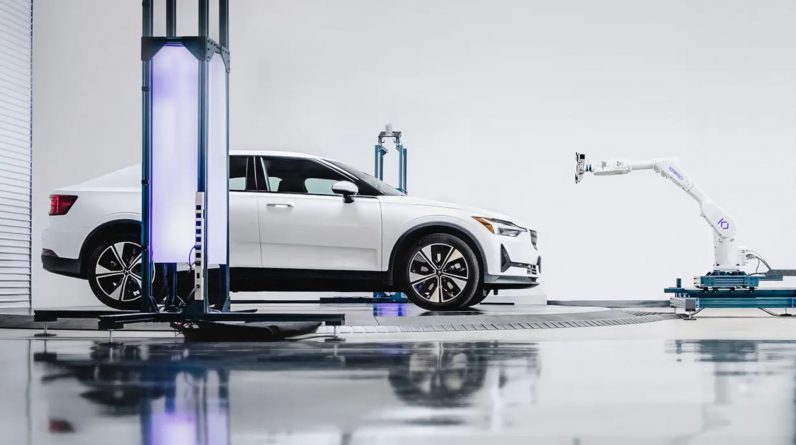
A California-based startup has developed a robotic system to quickly diagnose issues with an electric vehicle’s digital system.
Kinetic Automation’s system uses computer vision and machine-learning software to provide diagnostics and recalibration of the high-tech systems in modern vehicles.
The robotic system’s rapid diagnosis is likely to increase EV sales, which has cooled down in 2024 due to increasing cost of repairs for EV models.
Kinetic Automation maintains that today’s modern vehicles have more technology in them than ever before. “Repairing them is an urgent need and an extraordinary opportunity,” the company says.
Kinetic Automation leverages robotics, proprietary AI
The company claims that it leverages robotics, proprietary AI, and specialized expertise to automate digital collision repair across all makes and models.
“We help businesses adapt to the evolving automotive landscape by repairing digital collision damage in minutes rather than hours, increasing capacity, and growing revenue with unparalleled speed and precision.”
Only 26% of US consumers are likely to consider purchasing an EV
The innovative repair method comes as a 2024 study by J.D. Power found that only 26% of US consumers are very likely to consider purchasing an EV in the next twelve months, while more than 20% are very unlikely to consider an EV purchase.
The startup claims to fill a significant gap in the collision repair aftermarket, providing digital repair solutions for a wide range of businesses from national collision chains to dealerships and fleets.
Kinetic Hub can support up to 80 calibrations per day
According to the company, every state-of-the-art Kinetic Hub can support up to 80 calibrations per day. And with cycle times under 60 minutes, from drop-off to delivery, this gives collision repair businesses the flexibility and capacity to accept more customers and grow revenue without burdening their own staff, and without adding additional equipment or floor space.
When a customer’s car rolls up to one of Kinetic’s service bays, it is first scanned from bumper to fender with machine vision sensors, some on a robotic arm that peers over the top of the vehicle. The scan determines which systems need to be precisely programmed or need a recalibration, reported CNBC.
Then Kinetic’s software, which is connected to the vehicle’s systems, will initiate and track the completion of those fixes.
The company claims that all new vehicles have at least 3 sensor modules, with most modern vehicles having 30 or more. “New capabilities such as camera, lidar, radar and ultrasonic-based technologies are exponentially increasing the complexity of repairing today’s vehicles.
Kinetic Automation aims that one day it will provide its services to robotaxi fleets, and to the owners of other autonomous vehicles.
NEWSLETTER
The Blueprint Daily
Stay up-to-date on engineering, tech, space, and science news with The Blueprint.
ABOUT THE EDITOR
Prabhat Ranjan Mishra Prabhat, an alumnus of the Indian Institute of Mass Communication, is a tech and defense journalist. While he enjoys writing on modern weapons and emerging tech, he has also reported on global politics and business. He has been previously associated with well-known media houses, including the International Business Times (Singapore Edition) and ANI.






